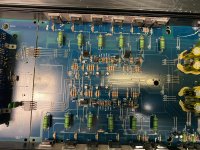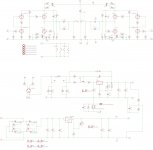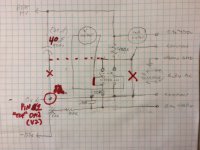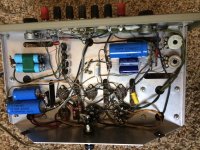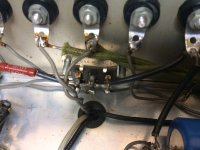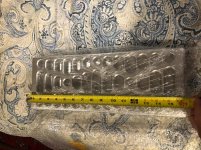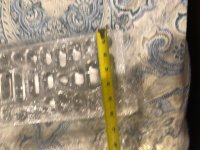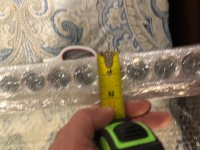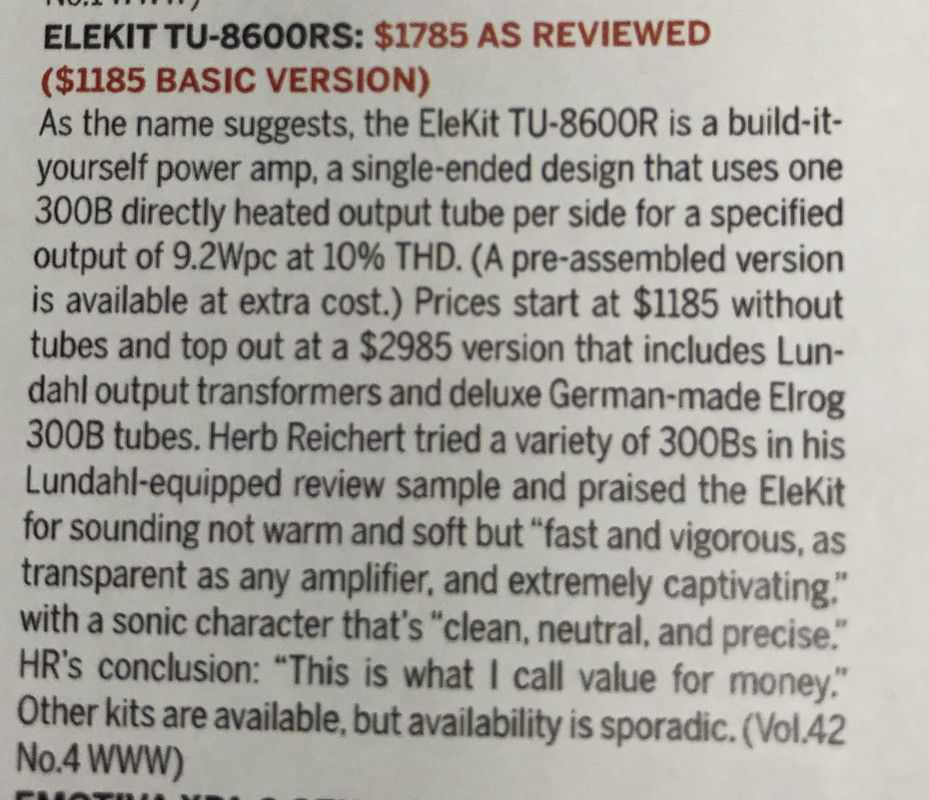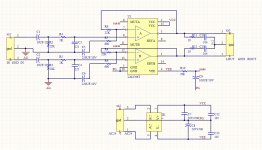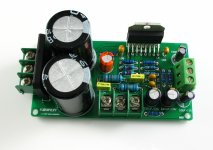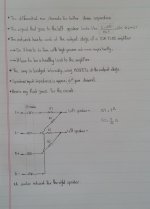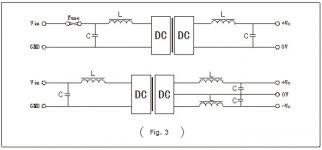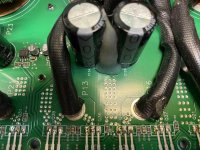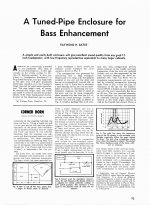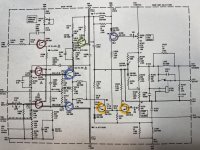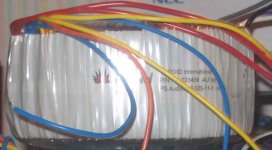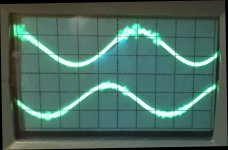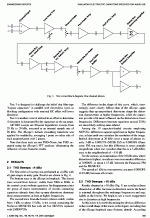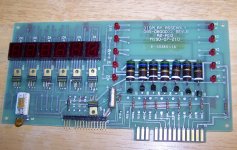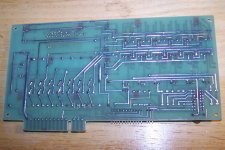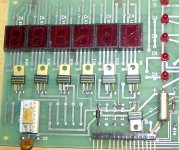[h=Introduction]%1[/h]
Malefoda started the thread
TDA1387 x8 DAC: let's check its design, mod it -or not-, play music -or not! 🙁- to alert everyone of the presence of a great non oversampling (NOS) DAC built around eight TDA1387 multibit DAC chips. In his blog post about the DAC, Abraxalito suggests it appears to be inspired by the Lite DAC-AH.
Overview:
- DAC: Phillips TDA1387 Stereo Continuous Calibration DAC
- datasheet link 1
- datasheet link 2
- datasheet link 3
- Input voltage: 220v (Note: ebay seller "doukmall" will sell it with 110v mains if requested)
- Signal input IC: CS8416 supports TOSLINK and Coax inputs, USB support with additional daughterboard
- Output: active opamp-based I/V
[h=Availablility]%2[/h]
Note Cart100 and Taobao offer "Blue" and "Black" versions. The "Blue" version is actually a parts-only kit, while the "Black" version is completely built, ready to use out of the box. The parts-only kit version does not come with transformers, heatsinks, or a case.
- Cart100. Priced in USD, selling both "Black"/fully assembled, and "Blue"/parts-only kit.
- Taobao. Intended for domestic Chinese purchasers, but can be bought in other parts of the world through an agent.
- Ebay seller "doukmall": current link. Will supply a 110v mains version on request.
Malefoda posted some links to suitable USB cards in
post #11.
[h=Relevant Links]%2[/h]
[h=Modifications]%1[/h]
Roughly in order of "bang-for-buck". Easiest/most useful mods at the top. Downwards the mods increase in complexity.
[h=Op-Amp Replacement]%2[/h]
NE5534 appears to be the most common default. Swap out the NE5534s for something a bit more RF-resistant and unity gain stable.
From
post #14, page 2:
I've buzzed out the connectivity of the opamp-DAC interface now. Its using active I/V with the opamp as a transimpedance amp. The feedback network is 620R in parallel with 2n2 and there's an output filter of 220R and 220pF. The resistors aren't the same value on mine as the silkscreen markings - my SS has 750R and 75R.
Given this new info, its clear why NE5534 is a poor choice - a transimpedance amp needs unity gain stability and 5534 doesn't have that without the Ccomp =22pF (not fitted here).
So far, the AD845 (AD845JNZ) has proven to be excellent:
DigiKey AD845JNZ-ND,
Mouser 584-AD845JNZ.
[h=Remove 2n2 Opamp Feedback Capacitors]%2[/h]
When facing the top of the PCB, with the transformers on the right, the 2n2s are the blue film caps to the immedate left of the opamps. See
post #18 on page 20 (20150211) for a picture if the description is not clear.
Quotes from Abraxalito on the 2n2 capacitors:
abraxalito said:
...Taking out the 2n2s has considerably reduced the harshness which was apparent on more complex material (orchestral strings, choral) so much that I'm not sure its still there.
...
Note that to try AD844 [opamps] you definitely need to remove the 2n2s.
...
I think the purpose of having the 2n2s across the feedback resistors is two-fold. First to limit the slewrate and secondly to provide a bit of low-pass filtering. There's a considerable downside in SQ to having them though, which isn't expected under the normal ways of understanding opamp behaviour. I suspect it has something to do with putting glitches on the supply rails when they're present.
...
If you were only to do one mod, the most significant one I'd say for listening pleasure is deleting those feedback caps (2n2s) around the opamps. That kills a lot of the harshness and improves the depth.
[h=Increase Capacitance Across TDA1387 pin7]%2[/h]
Pin7 is the tda1387 chip's reference decoupling pin. On the bottom of the board, there is a row of eight ceramic 1uF capacitors ("105"). The pole towards the transformer side of the PCB is ground, and the pole towards the I/O side of the board is pin7. See
post #95 on page 10 for a picture. (Note the 100nF ("104") capacitors are for tda1387 pin5, supply voltage input.)
The ceramics should be removed, and replaced with larger electrolytics. 10v/1000uF is recommended. The electrolytic capacitors can be soldered directly to the "105" pads on the bottom of the board. But watch out for height issues! If the stock case is to be used, the electrolytic caps must be no more than 6mm in diameter, and lay perfectly flat against the PCB. Success has been reported with using two 470uF caps in parallel for this purpose. Pics of bottom-of-board pin7 electrolytic capacitor mods:
Alternatively, the electrolytic caps can be soldered on top of the board, directly to the tda1387 IC pins. The capacitor's negative pole goes to pin4 (ground), and the positive pole to pin7.
Abraxalito's blog has a picture of this approach.
[h=Increase Decoupling of Analog Stage]%2[/h]
The stock DAC has two electrolytic and four film capacitors for opamp decoupling. Remove these capacitors and replace with as many 35V rated caps as you can fit. Find the lowest ESR you can get (Rubycon ZLH; Nichicon PW,HW; NCC KY, KZE). A well spec'ed recommendation: Nichicon UHW1V821MPD.
Digikey 493-6928-ND,
Mouser 647-UHW1V821MPD. Implementation pictures:
[h=Output Grounding Re-route]%2[/h]
The first item on Abraxalito's blog, "Re-route the output ground so the opamp filtering caps aren't subject to injected CM noise from the destination component (amp or pre)." More detail, along with an illustrative picture, on
post #6 on page 1:
Taking a look at the layout there could be a common-mode noise problem in that there are a couple of 220pF caps feeding directly into the opamps' +ve inputs from a dirty ground (the output ground). So first things first, I shall cut the thick track along the red line and route the output ground back to the trafo (indicated by the green arrow).
The pictures in
post #53 on page 6 are similarly instructive.
[h=Increase TDA1387 Chip Supply Capacitance]%2[/h]
There are a couple ways to approach this (and doing both is unlikely to be a problem). The first method is analogous to the "Increase Capacitance Across TDA1387 pin7" mod above. Pin5 is the TDA1387 chip's supply voltage. You can remove the stock "104" capacitors on the back of the board and solder bigger electrolytic capacitors in their place.
Post #95 on page 10 illustrates the pin5 capactors.
As of this writing, there are no pics of anyone increasing supply capacitance (pin5) on the
bottom of the board. However, as with the pin7 mod, you can also solder the pin5 electrolytic caps directly to the TDA1387 IC pins on the top of the board. See
post #53 on page 6 for a picture of this approach. (This picture shows added pin5 capacitance on top, directly soldered to the chip pins; and the added pin7 capacitance is on the bottom, using the "105" pads. This picture also shows added supply capacitance as described in the next paragraph.)
Another approach for adding TDA1387 IC supply capacitance is to modify the supply capacitor directly. Look again at post #53: the largest capacitor is bordred by: the heatsink to the right; the TDA1387 ICs to the top; and a big 20-pin microcontroller IC below. In this picture the cap is much larger than the stock one.
Abraxalito took this a step further, using the original capacitor's through-holes to create a "bus-bar", and hang multiple capacitors off that. From
post #31 on page 4:
I've just put a dent in one remaining weakness of this DAC - the bass. Its a very simple mod to add capacitance to the TDA1387's supply. I soldered some 1.5mm copper wire to the two pads for the lytic (just beneath the chips in Matthieu's pic) and used that wire as 'bus-bar' to solder across 4 * 15,000uF 6.3V Panasonic NHG caps in a horizontal position. This tightens up the bass nicely.
This can be seen in the picture on
Abraxalito's blog.
[h=Opamp Constant Current Source (CCS)]%2[/h]
From
post #125 on page 13:
I'd suggest current sources on the opamp outputs as with an array of 8 DACs the opamps have to source or sink up to 8mA, well beyond classA operation of the output stage. I use the traditional two transistor current source and it goes between the opamp output pin (pin6) and the -ve supply rail.
Subsequent
post #126 includes a circuit diagram plus more elaboration:
Here's the schematic for the classA buffer I'm using (four of) in the latest DAC mods. The two transistors at the bottom form a constant current source - its this CCS which can also be used to bias an opamp into classA. The bias current is set here by the 82R resistor for about 8mA. The transistors are literally 'two a penny' types in SOT23.
(Note the above post (#126) assumes the opamps have been removed entirely. The "four of" reference refers to one of these CCS circuits for each of the four channels (R+, L+, R-, L-) in balanced mode operation. This is an advanced modification, which will be described later in this guide.)
See
post #155 on page 16 for a simplified circuit diagram of the CCS. This diagram is exactly what is needed for biasing the opamps into class-A operation; also the lines are annotated.
As for component requirements of this circuit, from
post #157 on page 16:
Not all transistors will perform as well here - I look for a couple of parameters. First is 'hoe' the output impedance, indicated in Spice models by the parameter 'VAF' - we want a high number as ideally a CS has infinite output impedance. Second we don't want the transistor to have a much lower 'hoe' close to its saturation region - this can be seen on the traditional transistor curve tracer plots. I'll post up some pics later to demonstrate what's important. I don't know about Digikey's pricing but the BC817 (its a SOT23, there are leaded equivalents) is one of the cheapest going - I got a reel of them (3k) and the price was under $30 so less than a cent each.
As for resistors - almost anything will do, I'm using 0805 thick film without noticeable problems. I wouldn't advise 0603 as they do get rather noisy at higher values (like 33k). Leaded metal film will likely have better performance but as for whether you'd notice it, I can't say.
Known working parts:
NOTE: The NOS droop fillter pictured in
post #218 on page 22 is erroneous. CCS circuit attachment points to opamp pins 6 and 7 are swapped (i.e. the attachment point that should go to pin7 goes to pin6 and vice-versa).
See
post #269 on page 27 for a picture of a correct CCS implementation.
[h=NOS Droop Filter]%2[/h]
Many (most? all?) NOS DACs exhibit a rolloff or "droop" at the highest frequencies, typically about -3dB at 20 kHz.
Here's a discussion on Abraxalito's blog.
In
post #24 on page 3, Abraxalito proposes a filter for correcting the high frequency rolloff (aka NOS droop). Further elaboration is given in post #25. Quote from those two posts:
Here's a filter I'm going to try after the opamp - its designed to do two things. First correct for the NOS droop and second attenuate OOB images produced by the DAC. The filter that's currently on the opamp output (220R, 220pF) has a -3dB over 3MHz so isn't doing much (if anything at all) to tame the DAC's images. My filter's 2 pole and it provides 24dB attenuation at 100kHz. The inductor's a Coilcraft MSS1210. The 50k resistor isn't part of the filter itself, its my volume pot 🙂
...
I've been listening now for an hour or so and this filter's definitely for keeps. The rise in HF response makes it sound just a tad more transparent and I'm getting more of an 'in focus' sound, closer to my reference DAC.
See also
post #204 on page 21 for a schematic of the NOS droop filter with annotations. Note that in that schematic, "C9999" (far right, in series with RCA connector) is the DC-blocking capacitor. The stock TDA1387 8X board already has these capacitors. They are typically square blue 2.2uF film capacitors, or in some cases axial electrolytics. If your downstream component (typically an amp) has some kind of DC-blocking mechanism (typically a series capacitor or transformer), the caps can be removed. But, if the downstream component lacks a way to block DC (e.g. a series potentiometer for volume control), the cap is needed.
As for component selection, from
post #166 on page 17:
For the caps, I've used NP0 ceramics but they're SMT, you could use pretty much any film caps (steer away from mylar though) [if you] want leaded... Resistors - standard metal film leaded will be superior to the thick film that I've used.
Suggested parts:
See
post #218 on page 22 for pictures of a completed NOS droop filter.
See also
post #219 on page 22 for pictures of another completed NOS droop filter. This is a much neater implementation, which puts the inductor on the top of the PCB, and the RC circuit on the bottom.
See also
post #270 on page 27 for yet another completed NOS droop filter.
